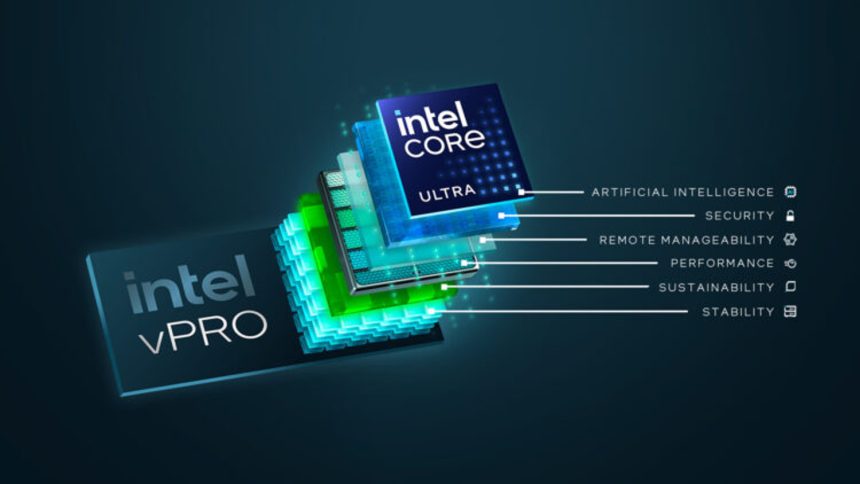The Intel Core Ultra 7 is making waves in the processor market, representing a significant leap forward in computing technology. This latest addition to Intel’s lineup brings a host of improvements, including enhanced AI capabilities, improved power efficiency, and a substantial boost in graphics performance. As the tech world eagerly anticipates the next generation of laptops, the Intel Core Ultra 7 is poised to redefine what users can expect from their devices.

This new processor series introduces several key advancements that set it apart from its predecessors and competitors. The integration of a dedicated neural processing unit (NPU) enhances AI workloads, while the redesigned architecture featuring P-cores and E-cores optimizes power consumption. Additionally, the Intel Core Ultra 7 boasts impressive integrated graphics capabilities, potentially rivaling discrete GPUs in certain applications. As we delve deeper into its features, we’ll explore how this processor stacks up against other options in the market and what it means for the future of mobile computing.
Architecture Overview of Intel Core Ultra 7
The Intel Core Ultra 7 represents a significant leap in processor design, introducing a new tiled architecture that marks a paradigm shift in mobile computing. This innovative approach combines four primary tiles, each manufactured using different processes, into a single System-on-Chip (SoC) for notebook vendors. The result is a versatile and powerful processor that caters to the demands of modern computing.
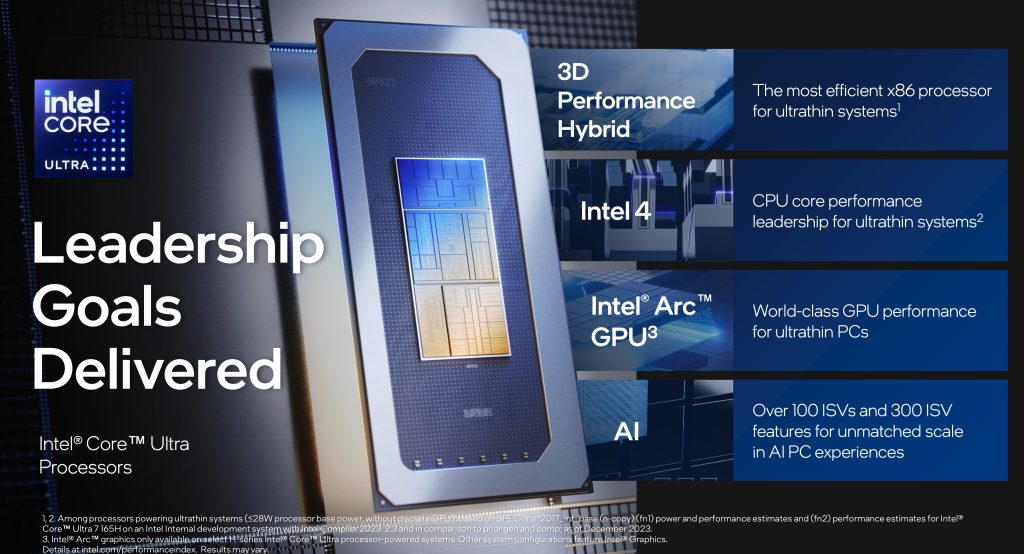
Next-Gen P-Cores
At the heart of the Intel Core Ultra 7 lies the compute tile, built on Intel’s latest process technology, Intel 4. This tile houses the next-generation Performance cores (P-cores), known as Redwood Cove. These P-cores are designed to handle demanding tasks with high efficiency. The Intel Core Ultra 7 155H, for instance, features six P-cores with a max turbo frequency of 4.8 GHz. This high-performance core cluster ensures that the processor can handle intensive workloads with ease, making it suitable for everything from content creation to complex computations.
Efficient E-Cores
Complementing the P-cores are the Efficient cores (E-cores), based on the Crestmont architecture. The Intel Core Ultra 7 155H includes eight E-cores with a max turbo frequency of 3.8 GHz. These cores are optimized for power efficiency, allowing the processor to handle background tasks and less demanding operations without consuming excessive energy. This heterogeneous approach to core design enables the processor to balance performance and power consumption effectively.
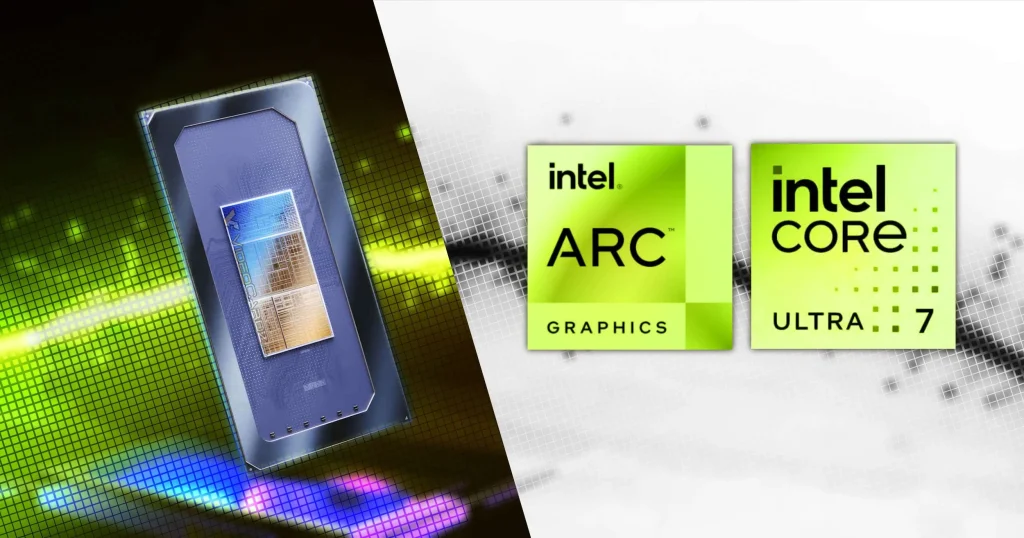
An interesting addition to the Core Ultra 7 architecture is the inclusion of two Low Power Efficient cores (LP-E cores) within the SoC tile. These cores, with a max turbo frequency of 2.5 GHz, are specifically designed to handle low-intensity tasks, further enhancing the processor’s energy efficiency. This three-tier core structure allows for more nuanced power management, adapting to various workload scenarios.
Integrated Arc GPU
One of the most significant advancements in the Intel Core Ultra 7 is the integration of Intel Arc graphics. The graphics tile incorporates Intel’s Arc-based Xe LPG integrated graphics, bringing discrete-level GPU capabilities to the mobile platform. With 8 Xe-cores and a max dynamic frequency of 2.25 GHz, the integrated GPU offers impressive graphics performance for a mobile processor.
The Arc graphics support DirectX 12.2, OpenGL 4.6, and OpenCL 3.0, ensuring compatibility with the latest graphics APIs and compute frameworks. This allows for enhanced gaming experiences and improved performance in graphics-intensive applications directly from the integrated GPU.
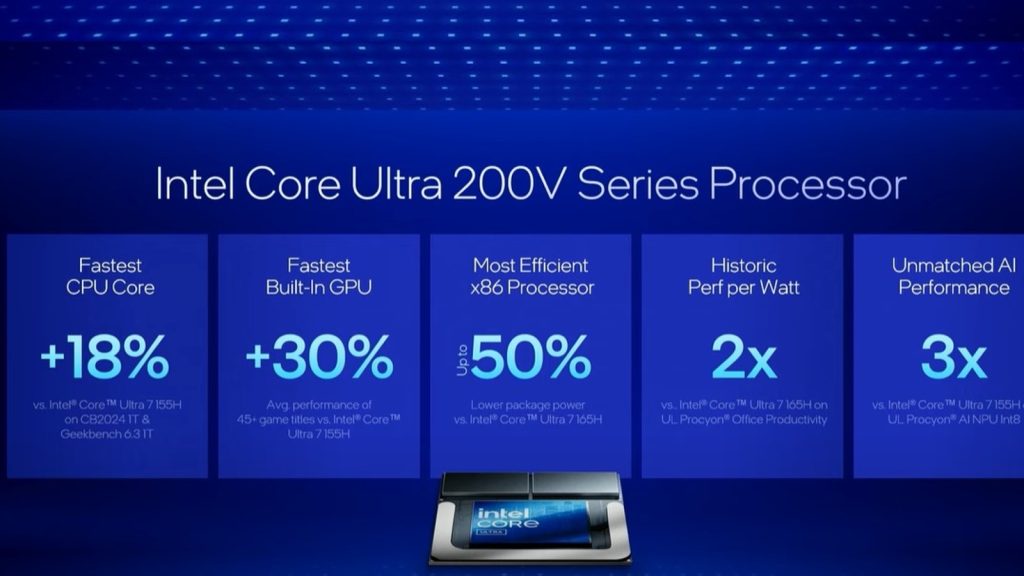
Moreover, the graphics capabilities extend beyond just rendering. The Intel Core Ultra 7 supports hardware-accelerated encoding and decoding for various video codecs, including H.264, H.265 (HEVC), and even AV1. This hardware acceleration is crucial for efficient video processing and streaming, which are increasingly important in today’s computing landscape.
The architecture of the Intel Core Ultra 7 represents a holistic approach to processor design, balancing high performance, energy efficiency, and advanced graphics capabilities. By leveraging a tiled architecture and incorporating specialized cores for different tasks, Intel has created a processor that can adapt to a wide range of computing needs while maintaining efficiency. This design philosophy positions the Intel Core Ultra 7 as a formidable contender in the mobile computing market, capable of handling everything from everyday tasks to AI workloads and gaming with aplomb.
AI Capabilities and NPU Performance
The Intel Core Ultra 7 brings significant advancements in AI capabilities, marking a new era for mobile computing. This processor introduces a dedicated neural processing unit (NPU) designed to handle AI workloads efficiently, enhancing overall system performance while maintaining power efficiency.
48 TOPS AI Acceleration
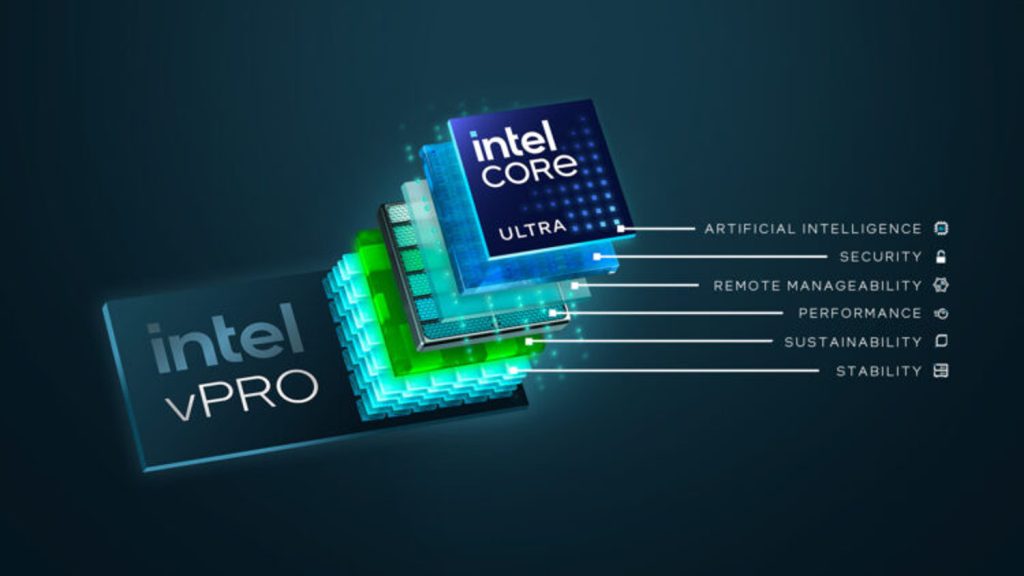
One of the most impressive features of the Intel Core Ultra 7 is its AI acceleration capabilities. The processor delivers up to 120 total platform TOPS (tera operations per second) across CPU, GPU, and NPU for AI performance. This substantial computational power is distributed among the different components, with the GPU providing up to 67 TOPS, the NPU contributing up to 48 TOPS, and the CPU adding up to 5 TOPS.
The NPU, a key component of Intel’s AI Boost technology, is capable of providing up to 11 TeraOPS of matrix math computational throughput. This dedicated AI engine is designed for low-power AI acceleration and CPU/GPU offload, allowing for more efficient processing of AI tasks without overburdening the main processor or graphics unit.
Benefits for Content Creation
Content creators stand to gain significantly from the AI capabilities of the Intel Core Ultra 7. The processor’s integrated Arc GPU, combined with its AI acceleration, opens up new possibilities for creative professionals. Users can expect enhanced performance in tasks such as photo editing, logo design, and video editing.

The AI-powered features enable more accurate background blurring and object removal in images, supported by AI models that improve the efficiency and quality of generative AI programs and language processing. These capabilities allow content creators to push the boundaries of their work, leveraging AI to streamline workflows and enhance creative output.
Real-World AI Applications
The Intel Core Ultra 7’s AI capabilities extend beyond content creation, offering practical benefits across various applications. For instance, the processor enhances video conferencing experiences with improved auto-framing and noise suppression. These AI-driven features contribute to clearer communication and more professional-looking video calls.
In the realm of security, the integrated AI engine is designed to make security software more powerful and efficient at detecting anomalies that signal potential security breaches. This proactive approach to security helps protect users against threats like ransomware and supply chain attacks before they can cause harm.
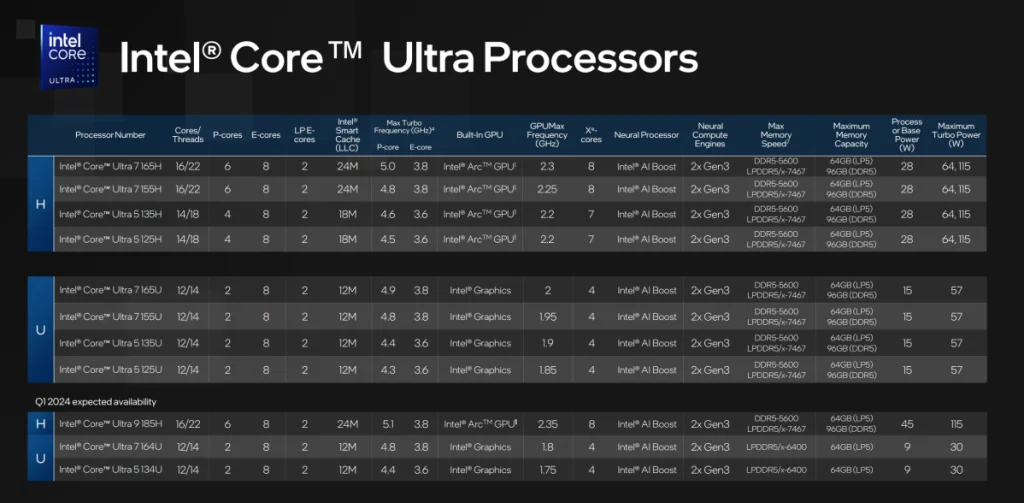
The processor also supports running large language models (LLMs) locally, including Meta’s LLaMA 3 and LLaMA 3.1, as well as Microsoft’s Phi-3, Phi-3 Mini, and Phi-3.5. This capability allows for more private and efficient processing of natural language tasks, reducing reliance on cloud-based services for certain AI functionalities.
Intel is actively working with over 100 AI Independent Software Vendor (ISV) partners to optimize AI PC experiences. This collaboration aims to bring more than 300 AI-accelerated ISV features throughout 2024, ensuring that users can take full advantage of the AI capabilities in their everyday software applications.
The Intel Core Ultra 7’s AI performance and versatility position it as a cornerstone of the AI PC transformation. As more applications leverage these capabilities, users can expect a more intuitive, efficient, and secure computing experience, with AI seamlessly integrated into various aspects of their digital lives.
Power Efficiency Improvements
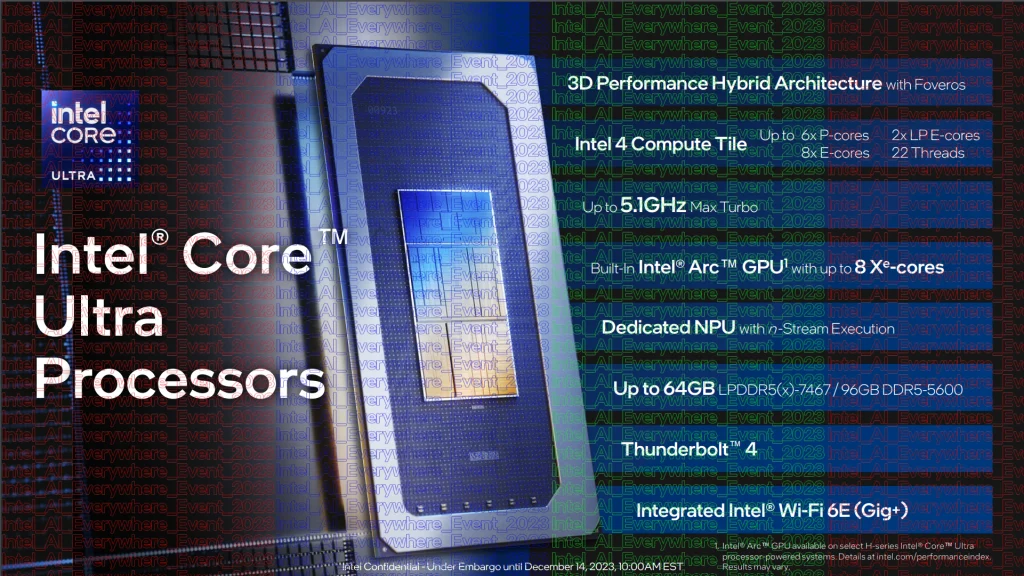
The Intel Core Ultra 7 represents a significant leap forward in power efficiency, addressing the growing demand for longer battery life and improved performance in mobile computing. This processor’s design prioritizes energy conservation without compromising on performance, making it an ideal choice for modern laptops and ultrabooks.
Reduced TDP
One of the key advancements in the Intel Core Ultra 7 is its flexible Thermal Design Power (TDP) range. The processor operates with a base power of 28W, which allows for efficient performance in everyday tasks. However, it can dynamically scale up to a maximum turbo power of 115W when needed for more demanding workloads. This wide range enables laptop manufacturers to design systems that can adapt to various performance requirements while maintaining optimal power consumption.
The processor also introduces a minimum assured power of 20W, which ensures a baseline level of performance even in the most power-constrained scenarios. This feature is particularly beneficial for ultraportable devices that prioritize battery life over raw performance.
Extended Battery Life
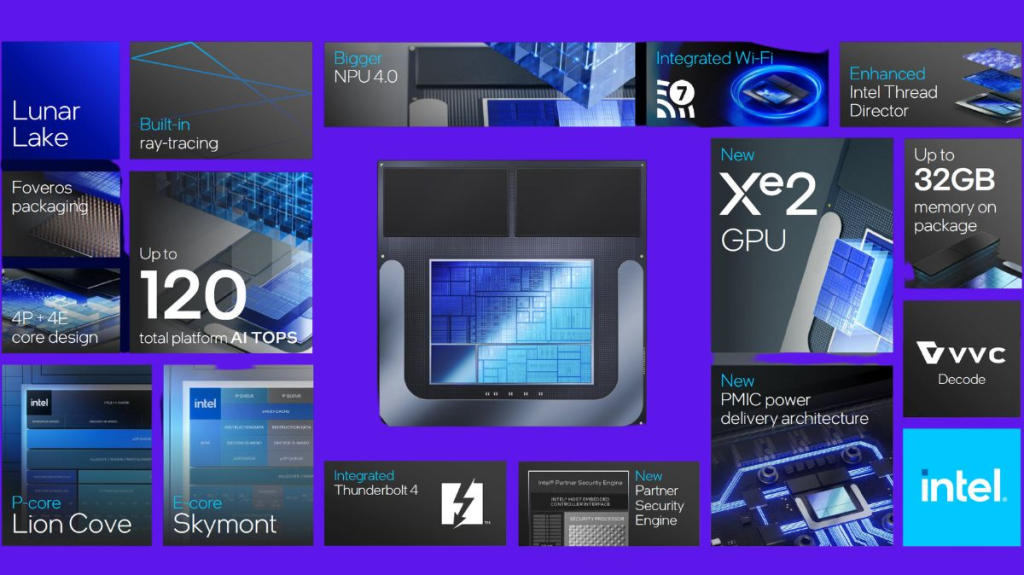
The Intel Core Ultra 7’s architecture is specifically designed to prolong battery life in mobile platforms such as notebooks and laptops. This focus on power efficiency is evident in several key features:
- Heterogeneous core structure: The processor combines high-performance P-cores with energy-efficient E-cores, allowing for intelligent task distribution based on workload intensity.
- Low Power Efficient cores (LP-E cores): These specialized cores are embedded within the SoC tile and are designed to handle low-intensity tasks with minimal power consumption.
- Intel Speed Shift Technology: This feature allows the processor to quickly select the optimal operating frequency and voltage for the best balance of performance and power efficiency.
These enhancements contribute to significantly improved battery life. In real-world testing, laptops equipped with the Intel Core Ultra 7 155H have demonstrated impressive endurance, with some models achieving over 12 hours of runtime in productivity workloads.
Dynamic Power Management

The Intel Core Ultra 7 employs advanced dynamic power management techniques to optimize energy usage across various components:
- Intel Turbo Boost Max Technology 3.0: This technology identifies the best-performing cores and provides increased performance on those cores by leveraging available power and thermal headroom.
- Intel Thread Director: This feature intelligently allocates tasks to the most appropriate cores based on workload characteristics and power constraints.
- Modular design: The processor’s disaggregated architecture allows for independent tile operation, enhancing power management capabilities across different components.
- AI-powered efficiency: The integrated Neural Processing Unit (NPU) can handle AI workloads more efficiently, offloading tasks from the CPU and GPU to reduce overall power consumption.
These dynamic power management features work in tandem to ensure that the processor delivers optimal performance while minimizing energy usage. The result is a more responsive and energy-efficient computing experience across a wide range of applications and usage scenarios.
The Intel Core Ultra 7’s power efficiency improvements represent a significant step forward in mobile computing. By combining reduced TDP, extended battery life, and dynamic power management, Intel has created a processor that can meet the demands of modern users who require both performance and longevity from their devices. As laptops and ultrabooks continue to evolve, the Intel Core Ultra 7 is well-positioned to power the next generation of energy-efficient, high-performance mobile computing solutions.
Graphics Performance Leap
The Intel Core Ultra 7 marks a significant advancement in integrated graphics performance, thanks to the incorporation of Intel Arc graphics. This leap in graphics capabilities positions the processor as a formidable contender in the mobile computing market, offering enhanced performance for both gaming and content creation tasks.

Intel Arc 130V/140V GPU
At the heart of the Intel Core Ultra 7’s graphics performance is the integrated Arc GPU. The processor features either the Arc 130V or the more powerful Arc 140V, depending on the specific model. The Arc 140V, for instance, boasts 8 Xe² architecture cores running at up to 2,050 MHz, along with 8 ray tracing units. This configuration allows for impressive performance in a variety of graphics-intensive tasks.
The Arc GPU supports DirectX 12 Ultimate, ensuring compatibility with the latest gaming technologies. It also offers hardware-decoding capabilities for a wide range of popular video codecs, including h.266 VVC, h.265 HEVC, h.264 AVC, AV1, and VP9. This comprehensive codec support enhances video playback efficiency and enables smooth performance in content creation applications.
XeSS and Ray Tracing Support
One of the key features that sets the Intel Core Ultra 7 apart is its support for Intel XeSS (Xe Super Sampling) technology. XeSS is an AI-powered upscaling solution that has been growing alongside Intel Arc GPUs. It’s now supported in over 100 titles, allowing gamers to enjoy better image quality without sacrificing frame rates.
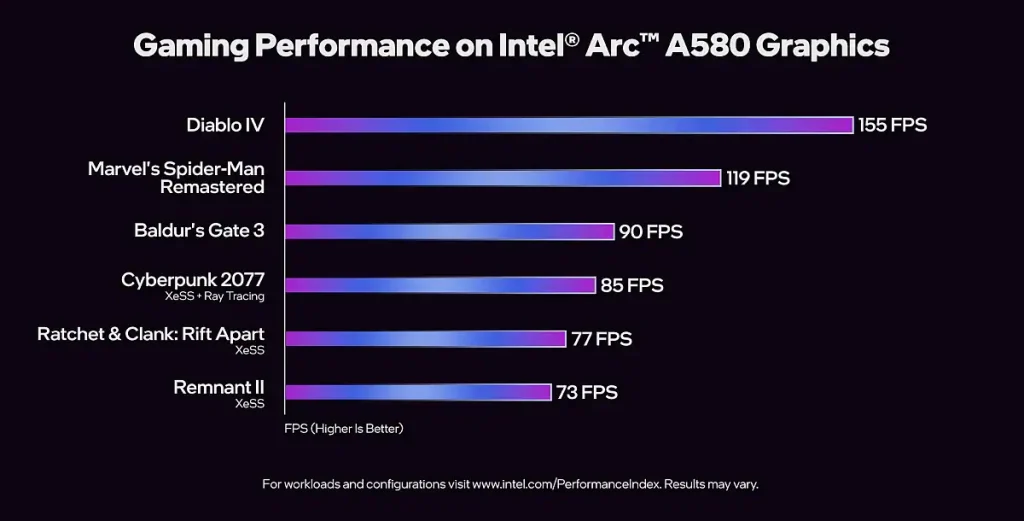
The latest version of XeSS, version 1.3, brings significant improvements. On the built-in Arc GPU of the Intel Core Ultra processor, XeSS 1.3 is expected to provide an 8% increase in FPS on average when tested across seven games at 1080p Medium settings. In some cases, such as The Witcher 3, XeSS can potentially double framerates compared to native rendering.
Ray tracing support is another notable feature of the Intel Core Ultra 7’s graphics capabilities. The inclusion of dedicated ray tracing units in the Arc GPU allows for more realistic lighting, reflections, and shadows in supported games and applications.
Gaming Benchmarks
In terms of gaming performance, the Intel Core Ultra 7 with its integrated Arc graphics shows promising results. When comparing the Arc Xe LPG mobile integrated graphics to AMD’s Radeon 780M and 760M, performance varies depending on the specific game title.
For instance, in Returnal, Intel’s solution tends to outperform its competitors. In Company of Heroes 3, performance is very competitive at 1080p Medium settings. The processor also demonstrates decent performance in games that rely more heavily on the Arc Xe LPG graphics cores, such as Total War Warhammer 3, although CPU-dependent tasks may show some limitations.
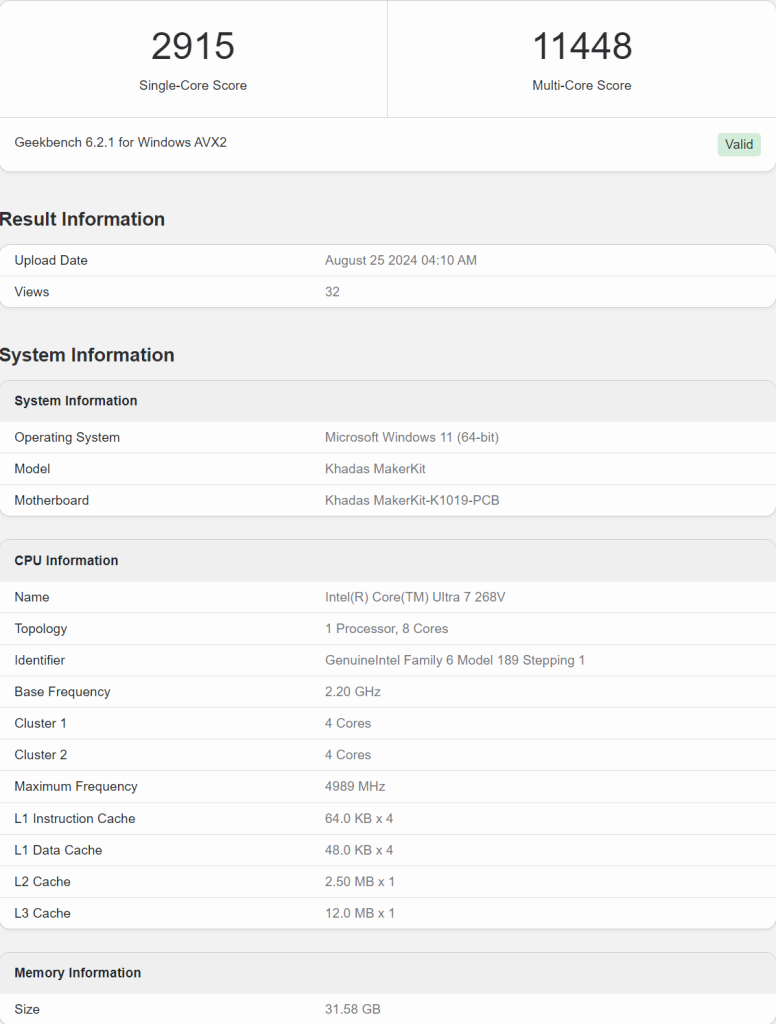
It’s worth noting that the performance of the Intel Core Ultra 7 can vary depending on the specific laptop model and its power envelope. For example, the ASUS Zenbook 14 OLED generally performs better than the MSI Prestige 13 Evo in most games tested, despite the latter being a smaller ultrabook with a lower overall power envelope.
While the Intel Core Ultra 7’s integrated graphics may not match the performance of high-end discrete GPUs, they represent a significant step forward for integrated solutions. The combination of improved raw performance, AI-enhanced upscaling through XeSS, and ray tracing support makes the Intel Core Ultra 7 a compelling option for users seeking a balance between portability and graphics capabilities in their mobile computing devices.
Comparison with Competitors
vs AMD Ryzen AI
The Intel Core Ultra 7 faces stiff competition from AMD’s Ryzen AI processors. When comparing the Core Ultra 7 155H to the AMD Ryzen 9 7940HS, the results are mixed. In multi-threaded workloads, such as Blender rendering, the Ryzen 9 7940HS outperforms the Core Ultra 7 155H, even when power-limited to between 35 W and 39 W. This showcases the efficiency of AMD’s Zen 4 architecture, especially in power-constrained scenarios.
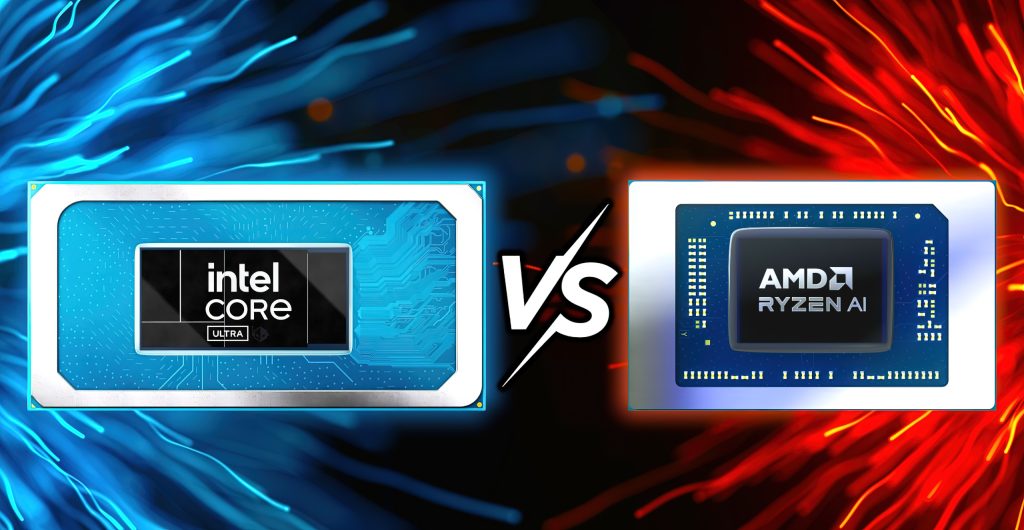
However, the Core Ultra 7 155H shows its strength in certain simulations, where it surpasses both the Ryzen 9 7940HS and the Ryzen 5 8600G APU. This demonstrates that Intel’s Meteor Lake chip excels in specific use cases, particularly those that can leverage its integrated Neural Processing Unit (NPU).
In terms of AI capabilities, the Core Ultra 7’s NPU proves to be highly efficient. When tested using UL’s Procyon Computer Vision AI benchmark with OpenVino and the ResNet 50 model, the NPU within the Core Ultra 7 155H performed exceptionally well, outpacing its integrated Arc Xe graphics by about 31% in total inferences.
vs Apple M3
The comparison between the Intel Core Ultra 7 and Apple’s M3 chip reveals some interesting performance differences. In single-core performance, the Apple M3 shows a 26% advantage over the Core Ultra 7 155H in Geekbench v6 tests. This gap extends to multi-core performance as well, with the M3 consistently achieving higher frames per second (FPS) in various workloads.

In terms of content creation tasks, the Apple M3 demonstrates superior performance. For instance, in Blender rendering tests, the M3-equipped MacBook Pro 14 completes scenes significantly faster than Intel Core Ultra 7 systems. This performance advantage extends to video editing and other creative applications.
However, the Intel Core Ultra 7 shows promise in certain areas. Its integrated Arc graphics have made substantial improvements, doubling the graphics performance compared to previous generations. This advancement allows for better gaming experiences, with some titles like Cyberpunk 2077 achieving playable framerates on medium settings when using Intel’s XeSS image upscaler.
vs Qualcomm Snapdragon X Elite
The Qualcomm Snapdragon X Elite presents a formidable challenge to the Intel Core Ultra 7 in the mobile computing space. In Geekbench v6 tests, the Snapdragon X Elite (X1E-84-100) outperforms the Core Ultra 7 165H by 17% in single-core performance. This advantage extends to multi-core performance as well, with the Snapdragon X Elite’s 12 powerful cores demonstrating significant gains over Intel’s hybrid core design.
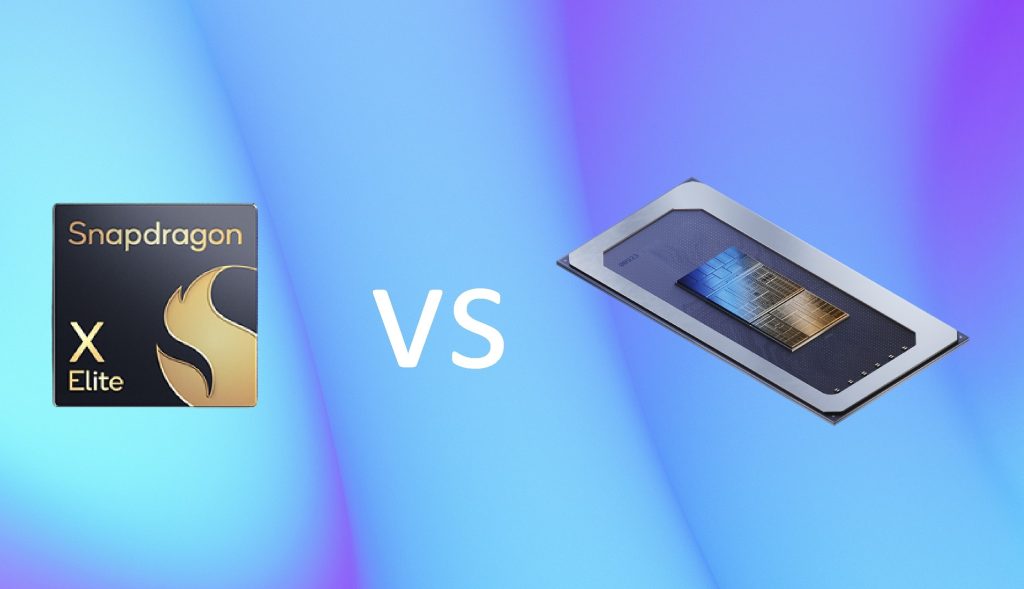
In graphics performance, the Snapdragon X Elite also shows an edge. In 3DMark tests, both the 23W and 80W variants of the Snapdragon X Elite outpace the Core Ultra 7, with the 80W model achieving over 10 FPS more than Intel’s offering in certain scenarios.
However, the Intel Core Ultra 7 maintains an advantage in productivity tasks. In PCMark 10, which evaluates performance in everyday productivity applications, the Core Ultra 7 outperforms the Snapdragon X Elite. This suggests that Intel’s processors still excel in traditional office and productivity workflows.
It’s worth noting that while the Snapdragon X Elite demonstrates impressive performance, Intel’s Core Ultra 7 benefits from a more mature software ecosystem and immediate availability in the market. This could be a significant factor for consumers and businesses making purchasing decisions in the near term.
In conclusion, the Intel Core Ultra 7 faces strong competition across various segments of the mobile computing market. While it shows strengths in certain areas like productivity tasks and AI acceleration, competitors like AMD, Apple, and Qualcomm offer compelling alternatives with their own unique advantages in performance, efficiency, and specialized capabilities.
Conclusion
The Intel Core Ultra 7 marks a significant step forward in mobile computing, bringing together enhanced AI capabilities, improved power efficiency, and a substantial boost in graphics performance. Its innovative architecture, featuring a dedicated neural processing unit and a flexible power design, allows for a more adaptive and efficient computing experience. This processor has a strong influence on various aspects of mobile computing, from content creation to gaming, positioning itself as a versatile solution for modern laptops and ultrabooks.
While facing tough competition from AMD, Apple, and Qualcomm, the Intel Core Ultra 7 holds its ground with its unique strengths. Its integrated Arc graphics and support for advanced technologies like XeSS and ray tracing offer compelling advantages for users seeking a balance between performance and portability. As the processor continues to evolve and more applications leverage its AI capabilities, users can look forward to a more intuitive and efficient computing experience, with AI seamlessly integrated into various aspects of their digital lives.
FAQs
- What are the benefits of using an Intel Core Ultra processor?
- Intel® Core™ Ultra processors represent the pinnacle of Intel’s processor offerings, providing advanced AI capabilities such as productivity assistants, creative tools for text and image generation, and enhanced collaboration features. These processors deliver exceptional performance, long battery life, and robust security features.
- How fast is the Intel Core Ultra 7 processor?
- The Intel Core Ultra 7 Processor 155H features a 24M Cache and can reach speeds of up to 4.80 GHz, according to its product specifications.
- What are the specifications of the Intel i7 2nd generation processor?
- The Core i7-2600 processor, part of Intel’s 2nd generation lineup, comes with 8 MB of L3 cache and operates at a base frequency of 3.4 GHz. It can boost up to 3.8 GHz under certain workloads. This processor is built on a 32 nm production node and contains 1,160 million transistors.
- Is the Intel Core Ultra 7 suitable for gaming?
- Yes, the Intel Core Ultra 7 is highly capable for gaming, as well as other demanding tasks in AI computing and professional content creation. It leverages Intel® Arc™ Graphics and Intel® AI Boost technologies, making it a powerful choice for serious gaming, content development, and data science applications.

